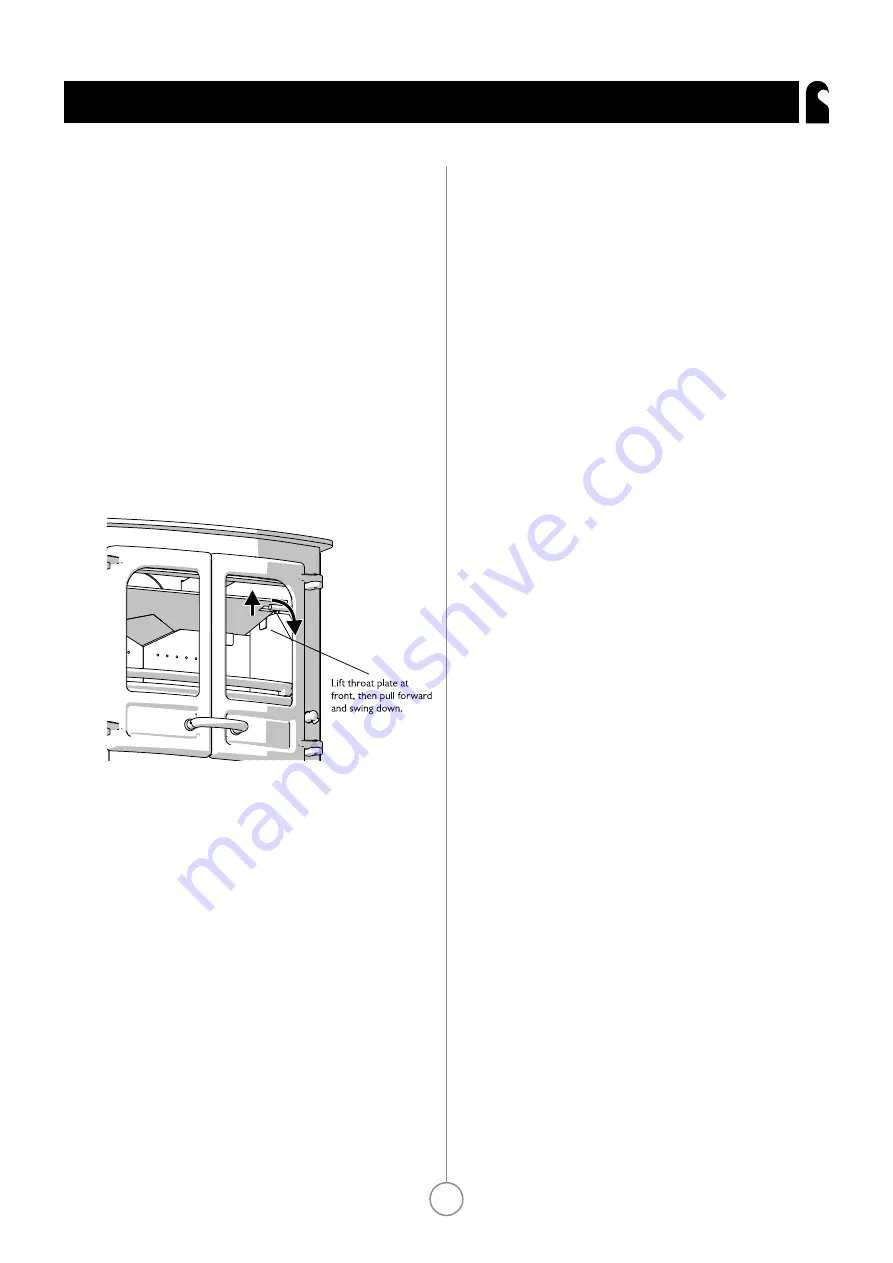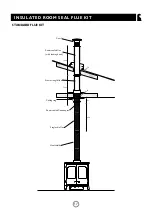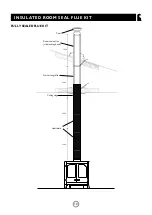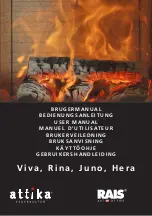
8
®
OPERATING INSTRUCTIONS
BAFFLE AND FLUE CLEANING
It is important that the throat plate and all the stove flue are kept
clean. They should be checked approximately once a week, by
looking up into the firebox for signs of soot or fly-ash on the baffle
and at the sides of the firebox. If there are signs of a build up of soot
or fly-ash deposits then the fire must be let out in order to clean the
throat plate and flue.
Before attempting to clean the baffle and flue, ensure that the fire is
cold. Wear suitable gloves to prevent irritation from soot deposits.
To remove the throat plate lift the front edge up and slide the plate
forward until it comes clear of the front pegs, then swing the front
edge down (see Fig. 8).
Fig. 8. Baffle
FLUE SWEEPING
When installing your Charnwood into an existing brick flue that has
previously served as an open fire, it is possible that the higher flue
gas temperature from a stove may loosen soot deposits with the
consequent risk of flue blockage. It is therefore recommended that
the flue be swept a second time within a month of regular use after
installation.
Your Charnwood flue should be swept at least twice a year. Where
the top outlet or vertical rear flue connector is used it will generally
be possible to sweep the flue through the appliance.
First remove the upper and lower baffles. Then sweep the flue
ensuring that soot is removed from all horizontal surfaces after
sweeping.
In situations where it is not possible to sweep through the appliance
the installer will have provided alternative means, such as a flue
access door.
After clearing any soot from within the stove, replace the baffle (see
Fig. 8 ).
It is important to use the correct flue brush for the flue size, different
types of sweep’s brushes are available to suit different flue.
For prefabricated insulated flues the manufacturers instructions with
regard to sweeping should be consulted.
TROUBLE SHOOTING
Fire Will Not Burn
Check that:
a) the air inlet is not obstructed in any way,
b) flues and flue are clear,
c) a suitable fuel is being used,
d) there is an adequate air supply into the room,
e) If an extractor fan is fitted, that it is not causing lack of flue draft
when operating.
f) there is sufficient draw in the flue. Once the flue is warm a draught
reading of at least 1.25 mm (0.05 in.) water gauge (12Pa) should be
obtained.
Blackening of Door Glass
Differences in flue draughts mean that the best settings of the air
controls will vary for different installations. A certain amount of
experimentation may be required, however the following points
should be noted and with a little care should enable the glass to be
kept clean in most situations:
a) Wet or unseasoned wood, or logs overhanging the front fence will
cause the glass to blacken.
b) The airwash relies on a supply of heated air to keep the glass clean,
therefore, when lighting the stove allow the firebed to become well
established before closing the air control. This may also be necessary
when re-fuelling the stove.
c) When re-fuelling keep the fuel as far back from the front fence as
possible, do not try to fit too much fuel into the firebox
d) Do not completely close the air control.
It is always more difficult to keep the glass clean when running the
stove very slowly for long periods.
Summary of Contents for III BLU
Page 1: ... Operating Installation Instructions AUSTRALIA III BLU ...
Page 2: ......
Page 21: ...21 ISLAND III BLU DIMENSIONS ...
Page 24: ...your premier dealer ...









































